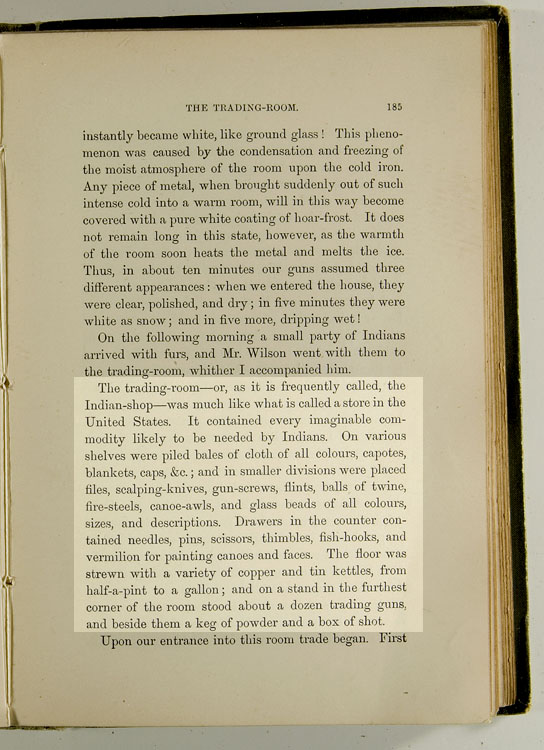|
 |
 |
| |
>>
>>
>> Articles/Diaries/Ephemera/Journals
The fur trade influenced the historical development of Canada in a number of ways including: the development and expansion into western and northern Canada; the significance of Canadian place names; the origin and rise of the Métis Nation; the impact of interaction between the First Peoples and the Europeans-and these connections can be found in personal and commercial stories about the people and events of the fur trade.

|
|
| Author: |
Robert Michael Ballantyne |
| Copyright Holder: |
Expired; no restrictions on use. |
|
|
|
Robert Michael Ballantyne (1825-1894) joined the HBC as an apprentice clerk in 1841 at the age of 16. During his six years in the fur trade, he served at Upper Fort Garry, Norway House, York Factory, and Tadoussac.
This is a description of the “trading room” or store at York Factory, which supplied the needs and wants of both the Company's employees and their Native trading partners. This description could also be applied to almost any HBC trading room in Rupert's Land. p185, 2nd pgh: “The trading-room… box of shot.”
“The trading-room – or, as it is frequently called, the Indian-shop - was much like what is called a store in the United States. It contained every imaginable commodity likely to be needed by Indians. On various shelves were piled bales of cloth of all colours, capotes, blankets, caps, etc.; and in smaller divisions were placed files, scalping-knives, gun-screws, flints, balls of twine, fire-steels, canoe-awls, and glass beads of all colours, sizes, and descriptions.
Drawers in the counter contained needles, pins, scissors, thimbles, fish-hooks, and vermilion for painting canoes and faces. The floor was strewn with a variety of copper and tin kettles, from half-a-pint to a gallon; and on a stand in the furthest corner of the room stood about a dozen trading guns, and beside them a keg of powder and a box of shot.”
Did
You Know?
Ballantyne's first book, Hudson's Bay, was published privately in Scotland in 1848: it was financed by an elderly lady who had enjoyed reading the letters he had written to his mother.
|
|
|
|